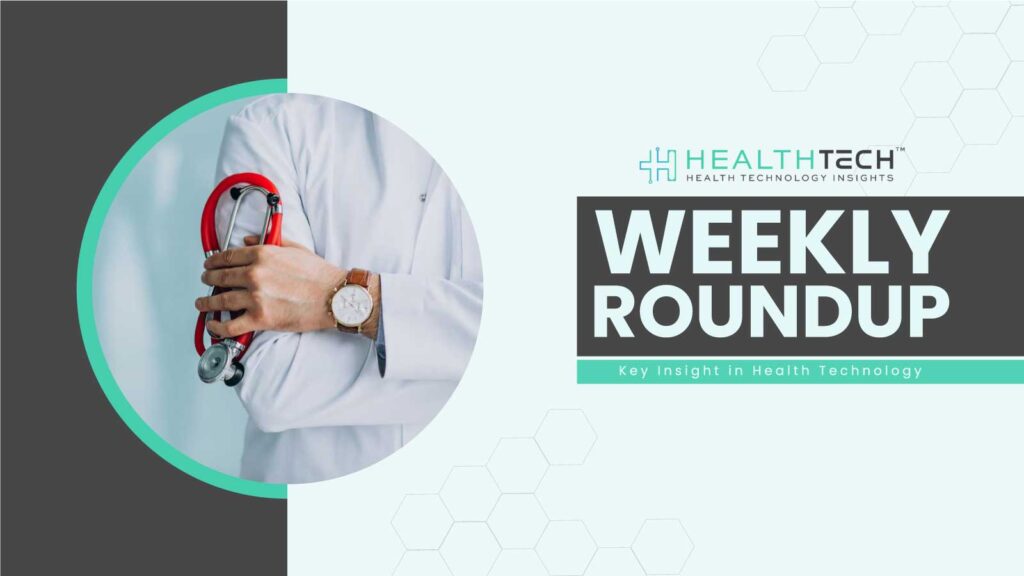Imagine that one day, your body would tell you exactly what it needs without invasive testing or repetitive check-ups. That is the potential of multimodal AI in healthcare. As the world is changing towards a proactive wellness from the traditional reactive treatment of disease, the combination of several data streams is transforming how we track health. Multimodal AI is a highly evolved artificial intelligence that blends voice, visual, and biometric information.
It provides a compelling window into human health. Multimodal AI combines different inputs to deliver precise, uninterrupted, and context-aware health monitoring. By integrating voice, visual, and biometric information, this technology provides an end-to-end method of health monitoring, allowing for early disease detection and tailormade care.
The Power of Multimodal AI
Multimodal AI refers to processing and analyzing different forms of data together. In the healthcare domain, this equates to blending:
- Voice Data: Speech analysis for stress detection, depression, or respiratory diseases.
- Visual Data: Facial movement and expression analysis for pain measurement or emotional detection.
- Biometric Data: Measurement of vital signs such as heart rate, oxygenation, and sleep patterns.
Through the integration of these inputs, multimodal AI presents an overall picture of a patient’s health, increasing diagnostic precision and treatment effectiveness.
Emergence of Multimodal Intelligence in Medical Monitoring
Conventional AI models tend to be based on a single input modality: text, images, or structured data. Successful in standalone applications, these models are short of expressing the complexity of human behavior and health. Multimodal AI combines real-time data to provide a comprehensive view of an individual’s health condition.
Whether analyzing vocal tone for stress, facial expressions for emotions, or biometric signals for body changes, multimodal systems go beyond surface observations. Multimodal systems present a composite picture of the patient, picking up on fine signals that may otherwise be missed.
Voice as a Window into Wellness
Voice contains a treasure of information. Research has observed that vocal biomarkers can distinguish between stress levels, respiratory illnesses, depression, and cardiac anomalies. For example, slight changes in pitch, speech rate, and tone can signal neurological or mental health issues early.
Multimodal AI can continuously scan voice patterns, via smartphone apps, wearable tech, or ambient sensors, and raise the alarm on early signals of concern. This non-invasive and passive strategy enables earlier interventions without interrupting routine activities.
Visual Data Integration
Visual information, such as facial expressions, posture, and movement, offers yet another rich source of insight. Smartphone cameras, smart mirrors, and home assistants can detect micro-expressions, track eye movement, and assess fatigue or pain. Coupled with AI, these observations become actionable insights.
For example, a system may identify that a patient continually winces during movement, cross-checking this with biometric information to recommend developing joint problems or long-standing pain exacerbation. In telehealth environments, visual AI can also assist clinicians in more educated decision-making, even when remote.
Real-Time Physiological Data
Biometric information like heart rate, temperature, oxygen saturation, blood glucose, and EEG/ECG forms the physiological framework of multimodal monitoring. Wearable technology such as smartwatches, ingestible sensors, and smart tattoos continuously gather and send this information in real time.
Imec, a foremost research center, has been the vanguard of ingestible diagnostics that track gastrointestinal activity and flag abnormalities as they happen. This type of information, when integrated with voice and visual inputs, can facilitate hyper-personalized health care. For instance, biometric warnings of accelerated heart rate accompanied by nervous speech and tense facial movements could indicate an impending panic attack or cardiac incident.
Context-Aware Monitoring for Accurate Interventions
What is revolutionary about multimodal AI is that it can analyze health in context. One high heart rate may not be alarming. But in combination with unusual voice patterns and facial tension, it paints a better clinical picture. Multimodal AI systems analyze all these signs together, using algorithms to prioritize importance and reduce false positives.
These systems also adapt and learn from individual baselines. A poor night’s sleep might impact one individual more than another. Contextual awareness assists in distinguishing within-person variability from clinically significant departures. This results in more accurate, timely, and tailored healthcare interventions.
Chronic Disease, Elder Care, and Mental Health
Multimodal AI is already being introduced in chronic disease management, geriatric care, and mental health. In managing conditions such as diabetes or hypertension in patients, these systems provide real-time monitoring without repeated clinical visits.
Passive voice and facial recognition systems can monitor signs of confusion, risk of falls, or emotional distress in geriatric care, enhancing safety and quality of life.
In mental health, the combination of voice tone, facial expression, and biometric signals can uncover early signs of depression, anxiety, or burnout, enabling intervention before situations get worse.
Privacy, Ethics, and Trust
As potentially exciting as multimodal AI is, it also creates legitimate concerns regarding privacy, data ownership, and algorithmic bias. Health information is highly personal, so combining data across modalities requires strong security and ethical controls.
Human-centered AI development, open data practices, and representative training data are needed to guarantee these technologies benefit diverse populations fairly. Trust is essential not only in technology but also in the purpose it serves.
A New Era of Smart, Human-Centric Care
Multimodal AI is a bold move toward profoundly human, empathetic healthcare. By hearing us speak, seeing our faces, and sensing our biometrics, these systems are transforming healthcare into a proactive, precise, and personal experience than ever imaginable.
Healthcare’s future is no longer only in clinics and on charts; it’s getting intuitive, ambient, and pervasive. As we go forward, this coming together of technology and empathy has the ability to change lives, empower people, and reimagine how we care for ourselves and for one another.
FAQs
1. What is multimodal AI, and how does it enhance healthcare monitoring?
Multimodal AI integrates diverse data types, such as voice, visual, and biometric information, to provide a comprehensive view of a patient’s health. By analyzing these combined inputs, it enables more accurate diagnostics, real-time monitoring, and personalized care strategies, surpassing the capabilities of single-modality systems.
2. How does multimodal AI improve patient outcomes in clinical settings?
By simultaneously processing various data streams, multimodal AI can detect subtle health changes that might be missed when analyzing data in isolation. This holistic approach allows for earlier interventions, tailored treatments, and continuous monitoring, leading to improved patient outcomes and reduced hospital readmissions.
3. What are the primary challenges in implementing multimodal AI in healthcare systems?
Key challenges include ensuring data privacy and security, integrating multimodal AI with existing electronic health record systems, managing the complexity of diverse data types, and addressing potential biases in AI algorithms. Overcoming these hurdles requires robust data governance, interoperability standards, and continuous algorithm training on diverse datasets.
4. How does multimodal AI contribute to personalized medicine?
Multimodal AI enables personalized medicine by analyzing a patient’s unique combination of genetic information, lifestyle factors, and real-time health data. This comprehensive analysis allows healthcare providers to develop individualized treatment plans that are more effective and have fewer side effects compared to one-size-fits-all approaches.
5. What is the future outlook for multimodal AI in the U.S. healthcare industry?
The future of multimodal AI in U.S. healthcare is promising, with ongoing advancements aimed at enhancing diagnostic accuracy, patient monitoring, and treatment personalization. As technology evolves and integration challenges are addressed, multimodal AI is expected to become a cornerstone in delivering efficient, patient-centered care across various healthcare settings.
To participate in our interviews, please write to our HealthTech Media Room at sudipto@intentamplify.com






